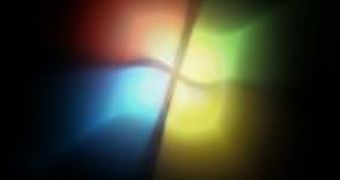The first crack for Windows 7 RTM Build 6.1.7600.16385 had a short life time span and Microsoft made certain of this aspect. The Redmond company revealed that it had worked with Lenovo, the original equipment manufacturer that contributed to the activation circumventing of Windows 7 RTM by leaking the OEM SLP Master Product Key that served as the backbone of the hack, in order to hinder future attempts to bypass the activation and validation process associated with the latest iteration of the Windows client, via this method. The Redmond company indicated that it had blacklisted the special product key issued to Lenovo for the OEM-SLP (System-Locked Preinstallation) of the gold bits of Windows 7.
“The key is for use with Windows 7 Ultimate RTM product that is meant to be pre-installed by the OEM on new PCs to be shipped later this year. As such, the use of this key requires having a PC from the manufacturer it was issued to. We've worked with that manufacturer so that customers who purchase genuine copies of Windows 7 from this manufacturer will experience no issues validating their copy of Windows 7. At the same time we will seek to alert customers who are using the leaked key that they are running a non-genuine copy of Windows. It's important to note that no PCs will be sold that will use this key,” revealed Alex Kochis, director of Genuine Windows at Microsoft.
At the same time, Kochis defended the Windows Genuine Activation technology as well as the company's antipiracy efforts. As the Windows 7 Ultimate RTM OEM crack was made public, critics were none too soon to point out that WGA was an immense failure just because it proved useless to stop or to detect the hack. However, this shortsighted and infantile perspective is the same as arguing that all automotive safety measures are failures because of one airbag that failed.
“Our primary goal is to protect users from becoming unknowing victims, because customers who use pirated software are at greater risk of being exposed to malware as well as identity theft,” Kochis noted. “Someone asked me recently - and I think it's worth noting here - whether we treat all exploits equally in responding to new ones we see. Our objective isn't to stop every "mad scientist" that's out there from dabbling; our aim is to protect our customers from commercialized counterfeit software that impacts our customers' confidence in knowing they got what they paid for. That will continue to be our focus as we continue to evolve our anti-piracy platforms, and respond to new threats that we see emerge in the future.”
The Windows 7 Build 6.1.7600.16385 Ultimate crack was made possible by a set of factors. First off, hackers were able to obtain the OEM-SLP (System-Locked Preinstallation) activation product key from a leaked ISO image of Windows 7 RTM from Lenovo. In addition, OEM activation 2.1 was bypassed by changing the motherboard's BIOS. And last, a Windows Vista OEM certificate was used to trick Windows 7 into activating.
“Windows 7 already includes an improved ability to detect hacks, also known as activation exploits, and alert customers who are using a pirated copy,” Kochis added. “There is a hack that is said to enable, when paired with the leaked key, a system to install and use a copy of Windows 7 Ultimate. Both the hack and the key are indications that a copy of Windows may not be genuine. The Windows Activation Technologies included in Windows 7 are designed to handle situations such as this one, and customers using these tools and methods should expect Windows to detect them.”

 14 DAY TRIAL //
14 DAY TRIAL //